Jesusfreak
Written by Joe Casey
Illustrated by Benjamin Marra
Colored by Brad Simpson
Lettered by Rus Wooton
Image Comics
One of the great misfortunes of American Christianity is that it didn’t evolve into a useful modern religion that utilized the affectations of its past in a way that acknowledged its strength for examining human truths rather than universal ones. Much like the stories of the Old Testament have always served a great purpose as just that, stories, the New Testament also had that potential, but the insistence on accepting it as real history that we cannot sway from has undercut its real strength as a drama of philosophy about the human condition. As a real history, it is the instrument of control. Accepted as literature, it’s far more powerful and transformative to the individual.
A good text changes with time, and if the original writers of the New Testament, and the other books that never quite made the official version, seemed originally to create their texts to push a specific agenda, a Judeo-Christian story cycle comparable to that of Robin Hood or King Arthur in order to convey truths less tangible than histories can convey, it certainly didn’t stay that way. The modern mind doesn’t think like the ancient ones and we have taken our attitude towards science and history, that they tell us about unwavering reality, and applied it to religion, which is far more of an art. Demanding that very art function as a solid foundation of perception that has no wiggle room for any different interpretation is how we got here.
In a sane world, Jesusfreak would not be greeted as anything radical, but instead another variation of one of our most important collective stories for the purpose of examining specific issues and concepts that are alluded to within that story. It’s how things are supposed to work.
The story of Jesus in Jesusfreak is the story of any of us as he tries to find some harmony between his place in the universe and who he actually is, and what that means for the world he exists in. What do you owe other people? What do you owe yourself? Must these pulls conflict you, create a war within you? Or can you make them work together somehow? And will the martial arts help with physical conflicts?
Yeah, the martial arts.
But first, some context. Jesusfreak begins as Jesus is still a woodworker, though his perception of the universe is changing, with thoughts and psychedelic visions flooding his head, seizing his emotions and demanding that his rational mind take control in the experience. This is not to overrule the mystical qualities of them, but rather to provide him with a calm that allows these experiences to enrich his mind.
It’s his encounter with John the Baptist that formalizes his internal metamorphosis as part of outward current events, as Jesus struggles against the occupying Romans using the tricks of transformation, including those martial arts I mentioned, as well as encounters the implications of John’s kinetic universal view and ministry in the form of raising the dead.
But in depicting the supernatural side of Jesus, Casey works to keep it mysterious while still giving us some insight to what happens internally. So when faced with the dead body of a woman, we are shown Jesus’ mind at work and the mystical experience he has that leads to resurrection. Combined with the martial arts ability, it’s here that Jesusfreak takes a serious detour from the New Testament, and the story of Jesus by way of Shang Chi. Put into the terms of comic book structures, this is the origin story of Jesus. It’s where he is transformed from a normal person into a super one.
Marra’s artwork has this unusual underground comics vibe combined with a completely classic quality that reminds me of certain Marvel Comics in the ‘70s and lends the story an unexpected Jodorowsky feeling which compliments Casey’s solemn-yet-playful tone. I think it’s because, in the ‘70s, there was an aspect to Marvel that felt related to the counter culture, especially in their non-superhero titles, and therefore windows to something a kid at the time wouldn’t necessarily access from their suburban neighborhood. Warren had the same tone to their black and white comics. That’s an exciting quality to possess and it’s perfect for Jesusfreak, given the subject matter.
Putting Jesus into superhero terms is, on the surface, not necessarily that original a notion. The execution here is everything despite the fact that the central premise — we shape our gods the same way we shape our heroes, to reflect what we need — lends itself to a Jesus/superhero mash-up. What’s important is that while slipping into satire was probably tempting, Casey and Marra take what they’ve created seriously and presents it with dignity. It’s amusing when Jesus takes on Roman gladiators, but it’s also a strangely warm moment that works with the wider concepts surrounding the story.
This might just be the reboot that Jesus has been waiting for all along — a narrative resurrection as opposed to any other kind people attached importance to.


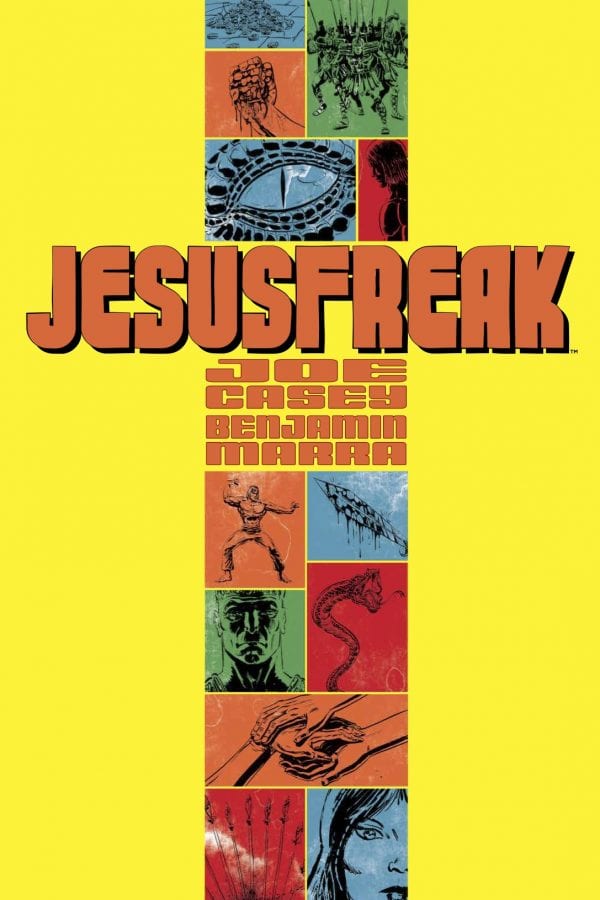
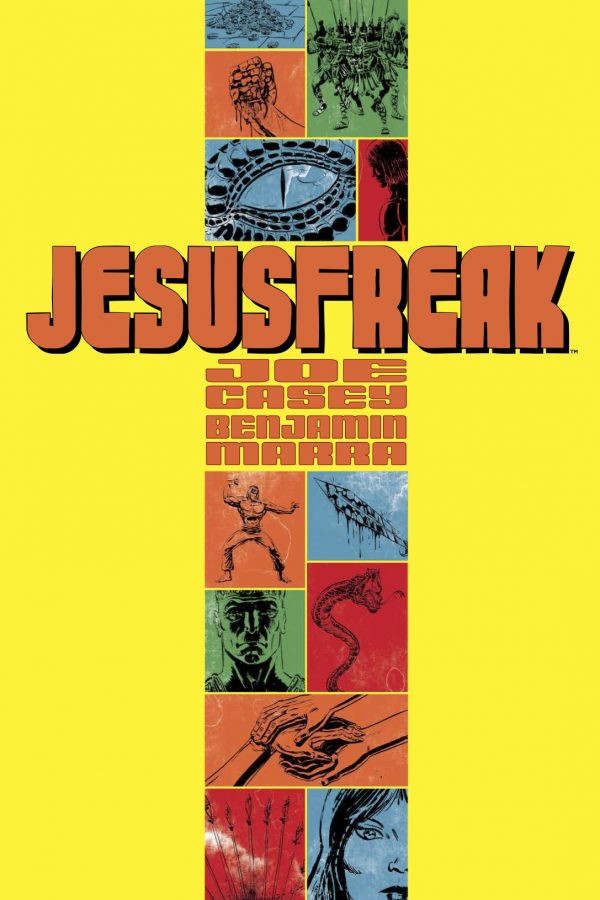
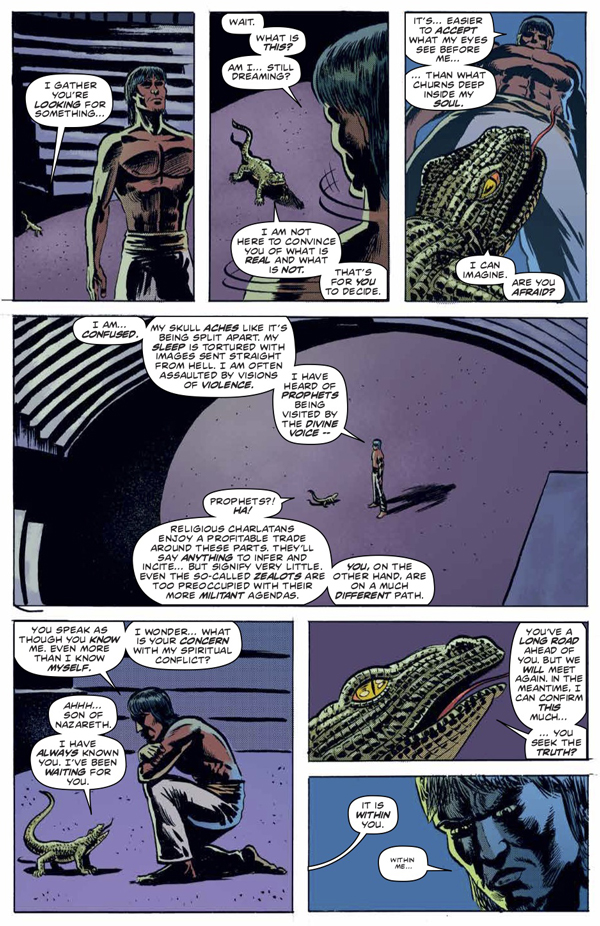
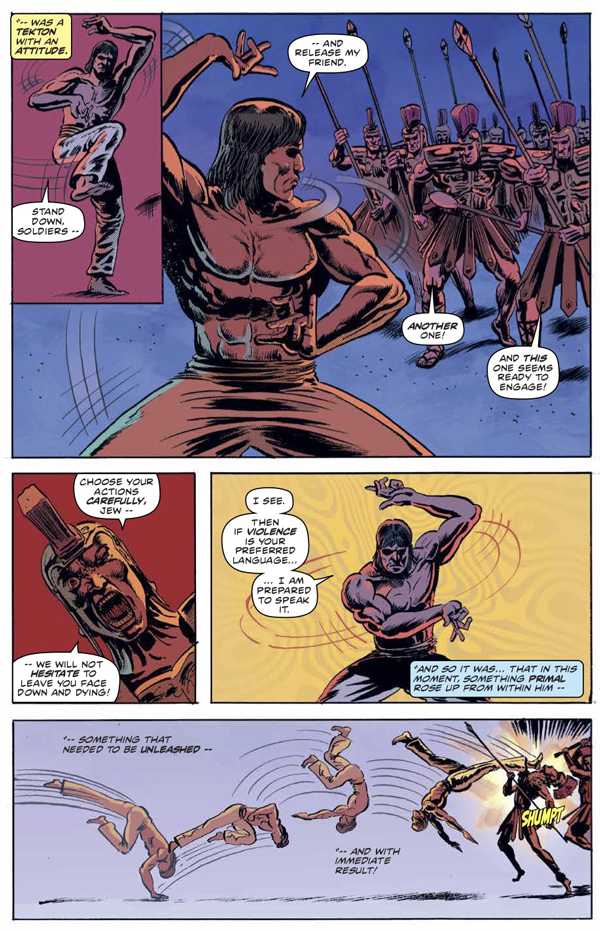
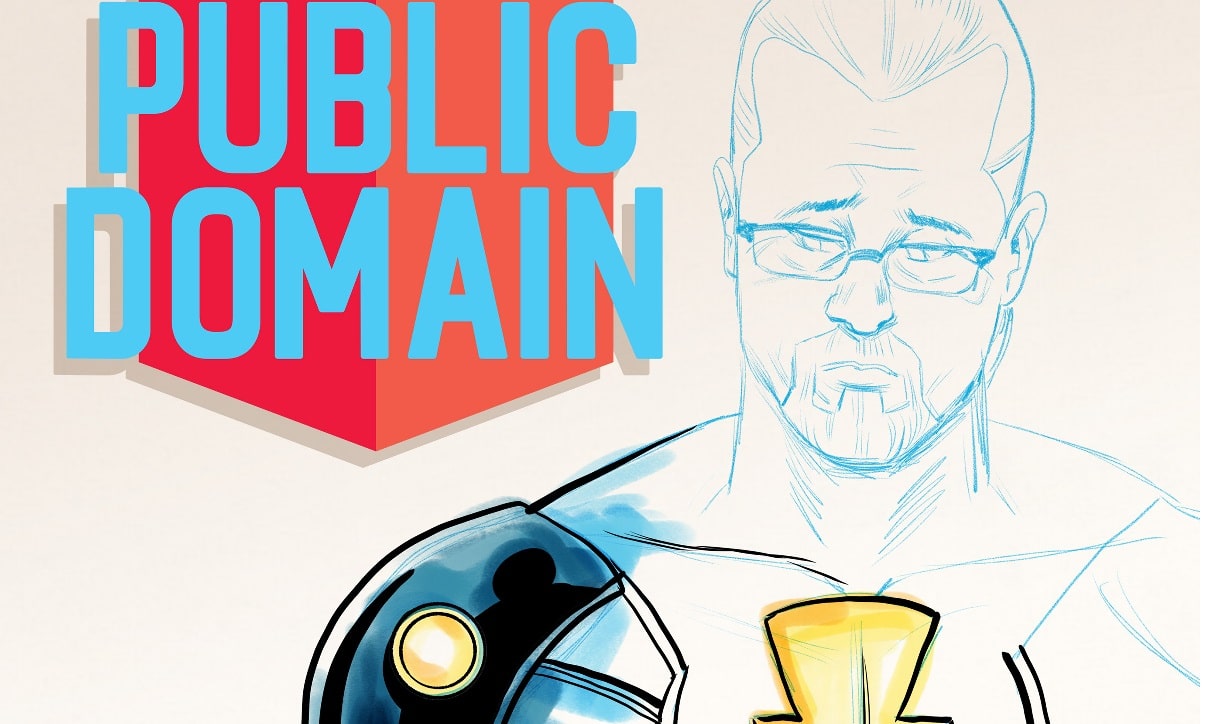






Man, I love it! Looks respectful, and energised with the pop sensibilities it uses. Nice.
religion is not an art…
You can’t just “reinterpret “something in a you don’t like it in a particular religion.
Religion is essentially dogmatic. There are rules that you must follow.
The human mind has not changed since ancient times.
Modern man has his own beliefs like “human progress”, democracy, Communism, capitalism.
People living in Western, Educated, Industrialized, Rich, And Democratic think the human mind has changed in the last two hundred years but it hasn’t.
Marra doesn’t take his own art seriously or present anything with “dignity”. His art is almost always satirical and badly drawn on purpose. This project is a corny 70s blaxploitation action movie take on Jesus’ story. It’s nothing more than that.
Comments are closed.